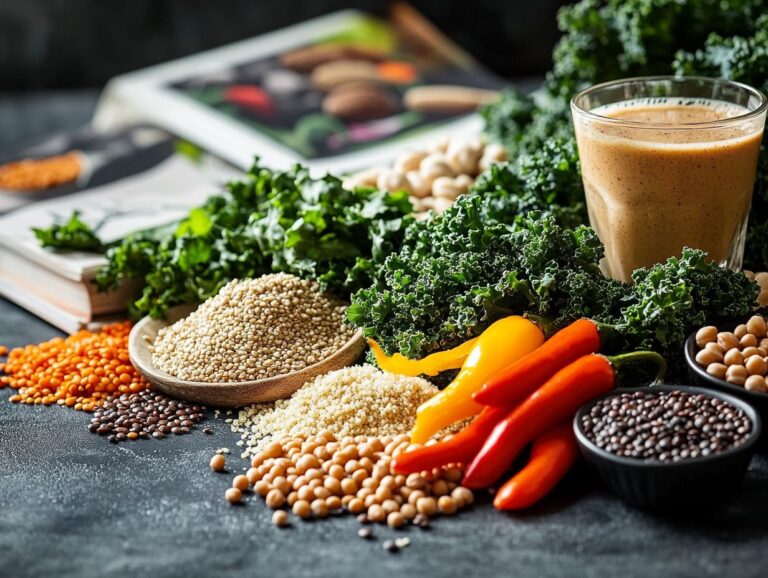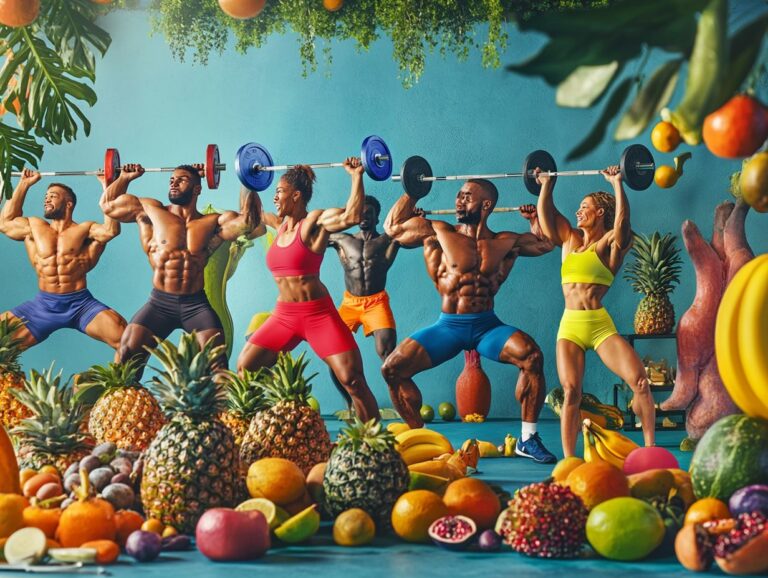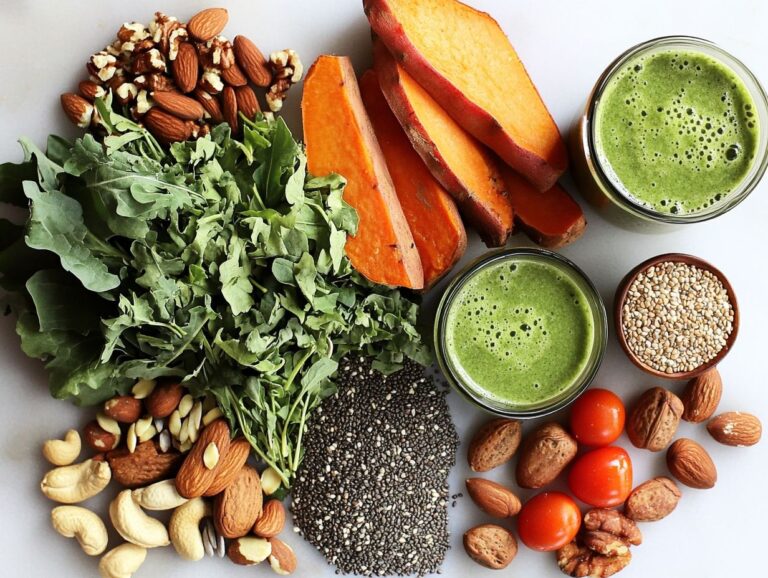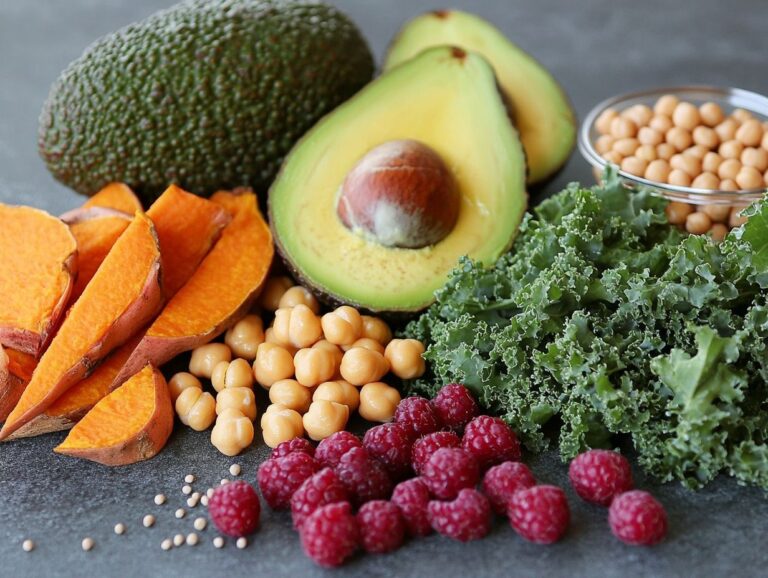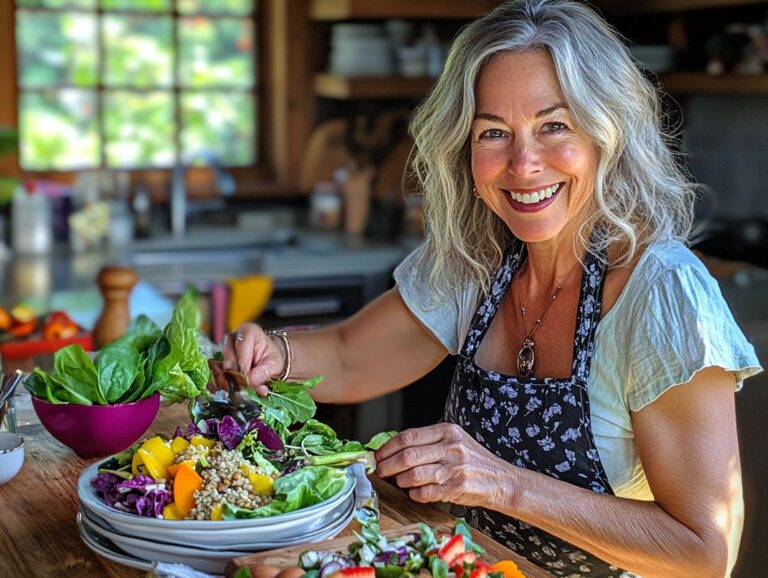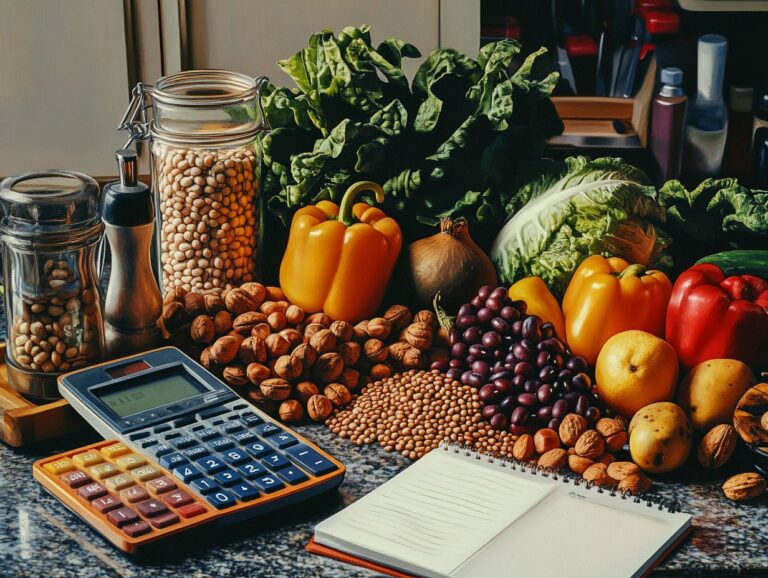Key Takeaways:
- A high-calorie vegan diet is a plant-based diet that focuses on consuming energy-dense and nutrient-rich foods to meet daily calorie needs.
- Reasons for needing a high-calorie vegan diet can include an active lifestyle, being underweight, or having certain medical conditions.
- To get enough calories on a high-calorie vegan diet, incorporate energy-dense foods, healthy fats, protein-rich foods, whole grains and starchy vegetables, and nutritious snacks.
What Is a High-Calorie Vegan Diet?

A high-calorie vegan diet is specifically designed to meet the nutritional needs of individuals aiming to gain muscle mass, increase weight, or maintain a caloric surplus while following a vegan lifestyle.
This diet incorporates a variety of protein-dense foods, healthy fats, and calorically dense foods to ensure adequate macronutrient intake without relying on empty calories.
Key components of this diet include:
- Whole grains
- Legumes
- Nuts
- Seeds
- Fruits
- Vegetables
Additionally, the positive health benefits associated with a vegan diet are also considered in its design.
Why Would Someone Need a High-Calorie Vegan Diet?
A high-calorie vegan diet is essential for individuals looking to maintain an active lifestyle, address underweight issues, and manage medical conditions that necessitate higher caloric intake.
These diets are particularly beneficial for those engaged in strength training or other physically demanding activities, as they support optimal muscle gain and provide various health benefits.
1. Active Lifestyle
An active lifestyle often necessitates a higher caloric intake to replenish energy levels, making a high-calorie vegan diet an excellent choice for individuals who work out frequently.
Incorporating nutrient-dense foods into daily meals can significantly enhance performance and aid in recovery. Meal prep is essential, as it enables individuals to plan and portion their meals, ensuring they receive sufficient calories and macronutrients needed for muscle gain.
2. Underweight or Struggling to Gain Weight
For those who are underweight or struggling to gain weight, a high-calorie vegan diet can help by incorporating nutrient-dense foods instead of empty calories. This approach not only supports healthy weight gain but also addresses common challenges such as low appetite and nutrient deficiencies.
Including a diverse range of foods, such as avocados, nuts, seeds, and plant-based oils, can significantly boost calorie intake. It’s essential to maintain a balanced intake of macronutrients by pairing high-protein foods, like lentils and chickpeas, with high-quality carbohydrates, such as quinoa and sweet potatoes.
Additionally, smoothies made with fruits, leafy greens, and nut butters can provide an easy way to increase calorie consumption while ensuring that essential nutrients are included.
3. Medical Conditions
Certain medical conditions require a high-calorie vegan diet to improve health outcomes, accelerate recovery, and maintain body weight during treatment. Approximately one-third of cancer patients experience unintentional weight loss before treatment begins.
Those recovering from surgery and patients undergoing chemotherapy often face a loss of appetite and fluctuations in weight. In such cases, a high-calorie vegan diet can provide the necessary energy and nutrients to support the healing process. This can be accomplished by incorporating protein-rich plant sources such as legumes, nuts, and whole grains.
Individuals with chronic illnesses, such as HIV/AIDS and certain cancers, frequently experience significant weight loss. A carefully planned vegan diet that includes calorie-dense foods like avocados, quinoa, and fortified plant-based products can help maintain a healthy weight and enhance overall vitality.
A nutritious high-calorie vegan diet should also include a diverse range of colorful fruits and vegetables to ensure an adequate intake of vitamins and minerals essential for optimal health during recovery.
How to Get Enough Calories on a High-Calorie Vegan Diet?
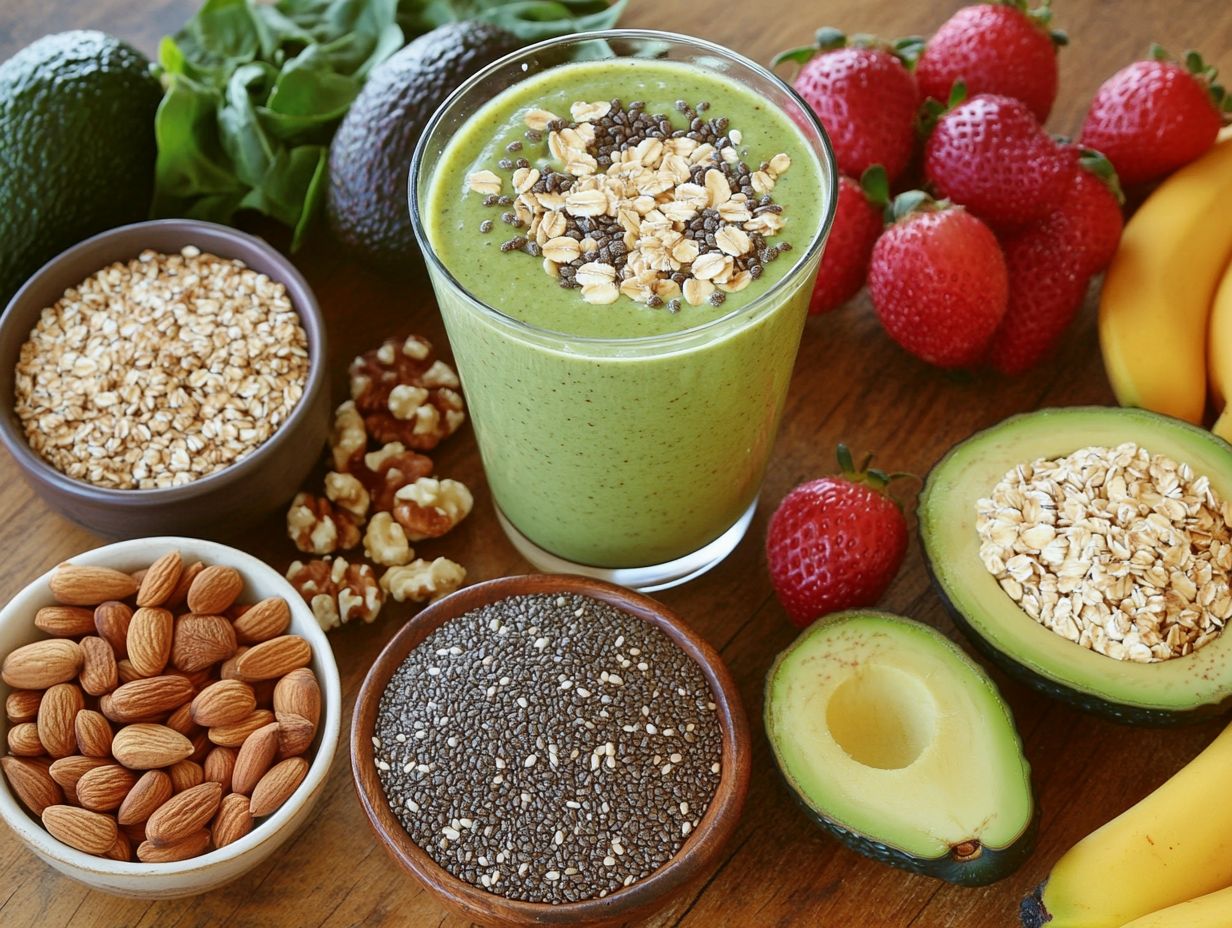
To achieve adequate calorie consumption on a high-calorie vegan diet, it is essential to maximize the intake of energy-dense foods, utilize a variety of macronutrient sources, and engage in proper meal planning and preparation, including using apps like MyFitnessPal for calorie counting and tracking macronutrients.
This approach should include foods high in healthy fats, such as nuts, seeds, and avocados, alongside protein-rich options like legumes and grains.
1. Eat Energy-Dense Foods
Foods with high caloric density are essential in a high-calorie vegan plan, allowing individuals to meet their caloric needs without consuming excessive bulk. Nuts, seeds, avocados, and peanut butter are excellent examples of such foods. These items help achieve optimal energy levels and provide satisfaction, enabling one to fulfill dietary requirements without feeling overly full.
For instance, adding chia seeds or flaxseeds to a smoothie can increase caloric intake while also providing beneficial omega-3 fatty acids. You can also incorporate high-fat vegan products like tahini, made from sesame seeds, which serves as a flavorful dressing or spread that adds both calories and taste.
Additionally, dried fruits like dates and apricots are concentrated sources of sugar and fiber, making them ideal snacks for those aiming to boost their caloric intake. High-caloric-density foods are crucial for maintaining energy balance while enjoying a healthy, satisfying plant-based diet.
2. Incorporate Healthy Fats
Incorporating healthy fats into a high-calorie vegan diet is an effective way to achieve a caloric surplus while promoting overall health. Sources such as olive oil, nuts, and avocados provide essential nutrients and are high in calories. These fats not only enhance satiety but also aid in the absorption of fat-soluble vitamins, thereby improving overall nutrient intake.
To successfully integrate these fats into meals, consider the following strategies:
- drizzle olive oil over roasted vegetables or add it to salad dressings;
- spread nut butter on whole-grain toast or blend it into smoothies for added texture;
- use avocados in guacamole or slice them for vegan sushi rolls;
- incorporate seeds like chia or flax into breakfast bowls or snacks to further boost both caloric intake and nutrient density.
3. Include Protein-Rich Foods
A high-calorie vegan diet can include a variety of protein-rich foods such as legumes, beans, soy products, quinoa, and nutritional yeast. Consuming a diverse range of these foods supports muscle mass gain and aids in faster recovery from workouts.
These protein-rich ingredients can be incorporated into any daily meal, whether it’s breakfast, lunch, dinner, or snacks. For instance:
- Lentils can be added to soups and salads.
- Tofu works well in stir-fries and wraps.
- Quinoa can serve as a nutritious base for bowls topped with vegetables and legumes.
- Edamame pods make for a great snack.
- Chia seed pudding, packed with protein, can be prepared in bulk and enjoyed multiple times throughout the day.
4. Consume Whole Grains and Starchy Vegetables
Whole grains and starchy vegetables are excellent options for increasing calorie intake on a high-calorie vegan diet. Foods such as rice, oats, potatoes, and quinoa, along with pasta and noodles, not only supply energy but also provide essential nutrients.
These foods deliver carbohydrates, along with a variety of fibers, vitamins, and minerals that are crucial for overall health. One example of a high-calorie vegan meal that incorporates whole grains and starches is a quinoa salad with roasted sweet potatoes and black beans, which is both filling and rich in protein and complex carbohydrates.
Another great option is a serving of oatmeal topped with bananas and nut butter, which makes for a satisfying breakfast that offers sustained energy throughout the morning.
5. Snack on Nutritious Options
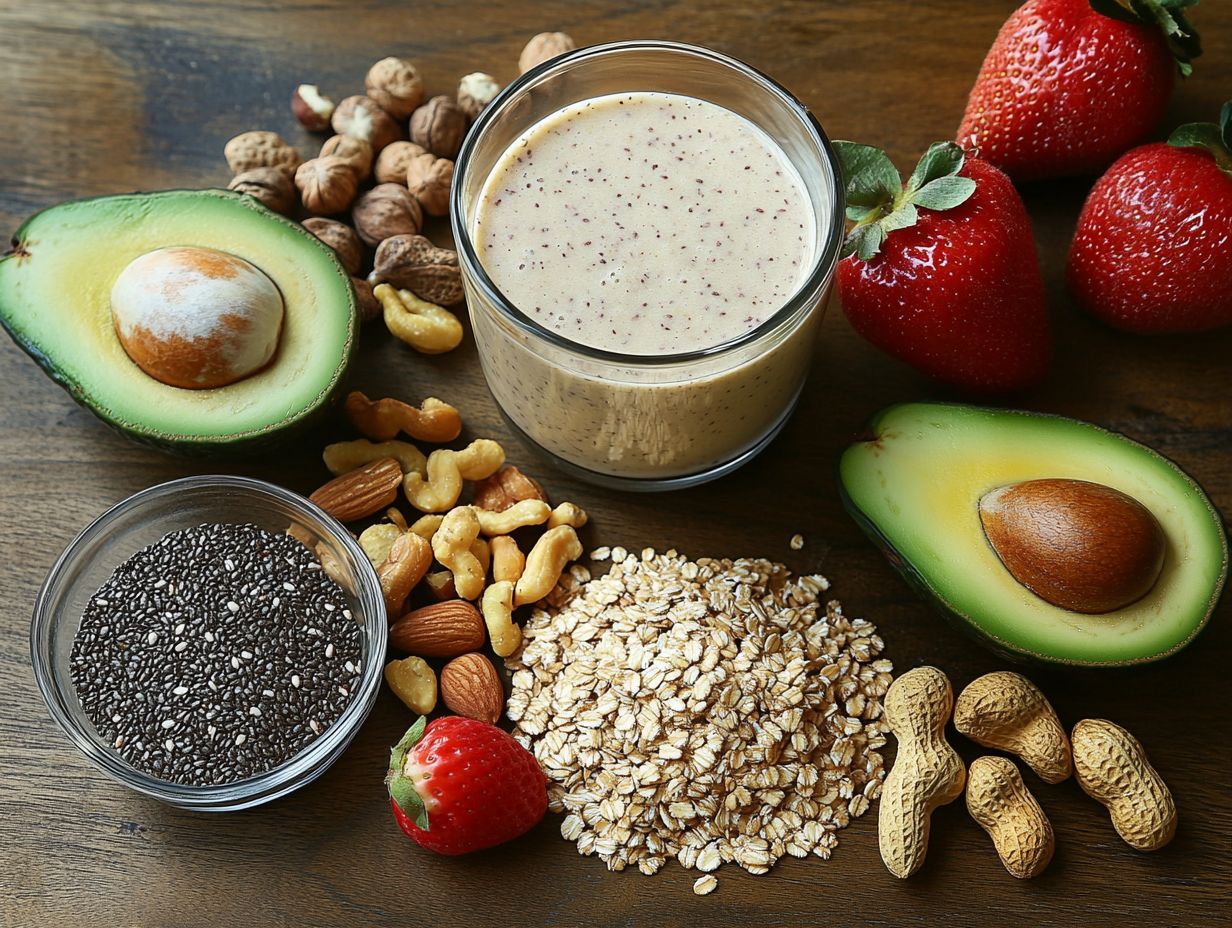
Incorporating healthy snacks between meals is an effective way to increase calorie intake on a high-calorie vegan diet. Selecting calorie-dense snacks that are rich in protein and healthy fats can be particularly beneficial.
Including a variety of nutrient-dense snacks not only supports overall health but also helps individuals meet their specific macronutrient needs. For instance, spreading nut butter on whole grain toast or topping oats with seeds adds healthy fats and fiber while enhancing protein content.
Other nutritious options, such as hummus served with whole wheat pita or a smoothie made with greens, fruits, and plant-based protein, can provide additional energy throughout the day.
Planning these snacks during weekly meal prep simplifies the process, ensuring they complement the main meals and deliver balanced nutrition without exceeding calorie targets.
What Are Some High-Calorie Vegan Meal Ideas?
Meal ideas for a high-calorie vegan diet are essential to ensure that the diet remains balanced and that individuals can consume enough calories through delicious meals and snacks, considering food choices that enhance the nutritional profile and support muscle gain and weight gain.
By incorporating a variety of foods, meals can be both calorie-dense and nutrient-rich, making it easier to meet caloric goals without the need to eat excessive quantities.
1. Avocado Toast with Tofu Scramble
A great meal idea for a high-calorie vegan diet is avocado toast topped with a thick tofu scramble, accompanied by nutritional yeast for added flavor and protein, providing a substantial amount of healthy fats and protein to kickstart the day.
To prepare this meal, begin by mashing the avocado and seasoning it with salt and lemon juice for enhanced flavor. Avocado is a great addition to a plant-based diet due to its healthy fats and nutrients.
In a separate pan, sauté chopped onions and bell peppers before crumbling firm tofu into the mixture. Season the tofu with spices like turmeric and cumin to add depth of flavor. Incorporating tofu into your meals adds a good source of plant-based protein.
To elevate the dish even further, consider adding:
- Nutritional yeast for a boost of B vitamins and a cheesy taste, an excellent dairy substitute
- Hemp seeds for a rich source of omega-3 fatty acids, which are essential for brain and heart health
- Fresh tomato slices or microgreens for added flavor, color, and nutrients
2. Quinoa and Black Bean Bowl
A quinoa and black bean bowl is a high-calorie vegan meal that is not only easy to prepare but also nutrient-dense and rich in protein, making it an ideal choice for muscle gain, weight gain, and healthy weight management. Quinoa is a fantastic plant-based grain that provides essential amino acids.
This hearty meal can be easily modified to suit various flavors and textures. To prepare the bowl, cook the quinoa according to the package instructions and heat canned black beans on the stove or in the microwave, adding spices like cumin and garlic to taste. Beans are a great source of fiber and plant-based protein.
Once cooked, combine the quinoa and black beans in a bowl. You can enhance the dish by adding toppings such as:
- sliced avocado
- cherry tomatoes
- nutritional yeast for extra flavor and nutrients
Additionally, variations like roasted sweet potatoes or sautéed vegetables can be included to cater to different tastes while also increasing the caloric content of the meal.
3. Lentil and Vegetable Curry
A lentil and vegetable curry is a high-calorie comfort food that is perfect for vegans. This protein-rich dish features a variety of vegetables, making it a satisfying and nutritious meal.
To prepare the curry, onions, garlic, and ginger are sautéed in coconut oil to create a flavorful base. The addition of spices, including cumin, coriander, turmeric, and garam masala, enhances the dish with warmth and depth of flavor. Cooking with coconut oil adds healthy fats to the meal.
Diced tomatoes and coconut milk contribute creaminess, while the spices combine to create a rich sauce that beautifully coats the lentils. Lentils are a wonderful source of plant-based protein and fiber. Hearty vegetables such as sweet potatoes, spinach, and bell peppers not only add vibrant color but also provide an array of vitamins and minerals.
The curry is simmered until all the ingredients are tender and is best served over brown rice or quinoa for added calories and texture.
4. Chickpea and Vegetable Stir-Fry
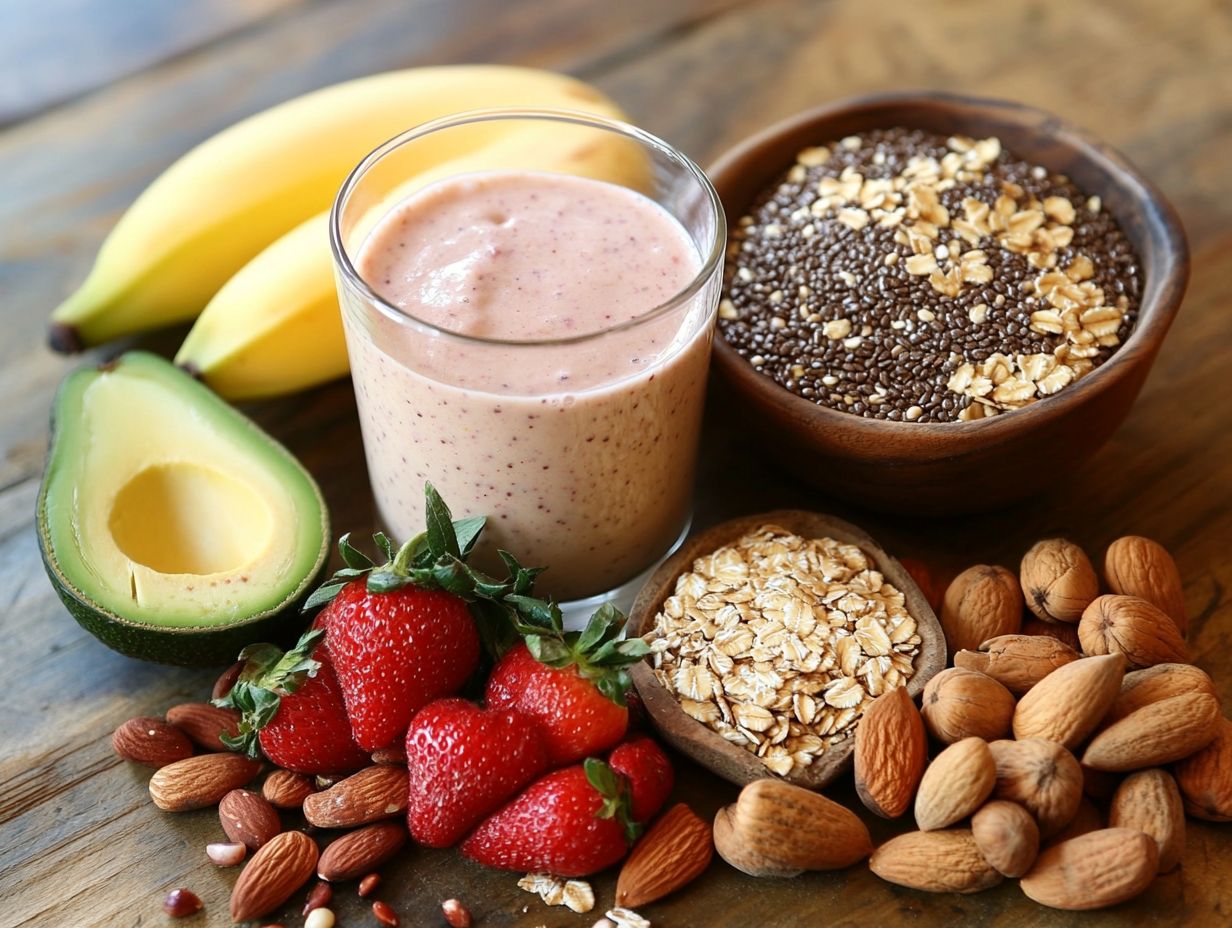
Chickpea and vegetable stir-fry is a quick and easy high-calorie meal that is rich in protein and nutrients, thanks to the delightful chickpeas and a variety of stir-fried vegetables. The vibrant colors and flavors of this dish make it both satisfying and nutritious, perfect for a high-calorie vegan diet, and it can be prepared in under 30 minutes.
To make the stir-fry, start by heating a tablespoon of high-calorie oil, such as sesame or coconut oil, in a large skillet or wok. Add minced garlic and ginger to infuse the oil with flavor, then incorporate chopped bell peppers, broccoli, and carrots, cooking them until they are tender yet still crisp.
Chickpeas serve as an excellent source of protein, and you can enrich the dish further by adding ingredients like avocado or cashews. Season the stir-fry with soy sauce, chili flakes, or sesame seeds for an added crunch, making this high-calorie meal both decadent and nutritious in every bite.
5. Vegan Protein Smoothie
A vegan protein smoothie serves as a nutritious and high-calorie meal or snack, as it combines various protein sources, fruits, and healthy fats to create a delicious drink. To achieve a higher calorie count while maintaining nutritional value, consider incorporating the following ingredients:
- Nut Butters: High in healthy fats and protein, nut butters such as almond or peanut butter can significantly increase the calorie content while adding nutritional benefits. Peanut butter is particularly rich in protein and healthy fats.
- Avocado: This fruit adds creaminess, healthy fats, and fiber to the smoothie. Avocado contributes essential nutrients that are vital for maintaining a healthy body.
- Ripe Banana or Dates: These natural sweeteners provide a good source of natural sugar, enhancing the flavor of the smoothie.
- Oats: Including whole grain oats not only adds calories but also provides essential nutrients, making the smoothie more filling and satiating. Natural oats are a great source of carbohydrates and fiber.
- Hemp or Chia Seeds: Adding a teaspoon of these seeds introduces omega-3 fatty acids, which are essential for brain and heart health, alongside additional protein and fiber.
With these ingredients, a vegan protein smoothie can be both calorie-dense and nutritionally balanced.
What Are Some Tips for Maintaining a High-Calorie Vegan Diet?
Effective meal prep and planning strategies are essential for maintaining a high-calorie vegan diet, as they enable individuals to consistently consume the calorie-dense foods necessary for their nutritional needs. Meal prep and meal planning can ensure that you always have access to nutritious, high-calorie meals.
The abundance of nutrient-dense foods available makes it easier for those following a high-calorie vegan diet to meet their dietary requirements through a variety of options. Incorporating a diversity of grains, legumes, nuts, seeds, fruits, and vegetables can help achieve a balanced and nutritious diet.
1. Plan and Prep Meals Ahead of Time
Planning and preparing meals in advance is essential for those following a high-calorie vegan diet, as it helps control food choices and ensures a consistent supply of nutritious options throughout the week. Using apps like MyFitnessPal can assist in tracking your meal prep and caloric intake.
This proactive approach can prevent individuals from resorting to last-minute unhealthy alternatives and minimize food waste. It also helps in managing your caloric surplus effectively.
By establishing a meal planning routine, one can create a balanced menu that features a variety of whole grains, legumes, fruits, and vegetables. Including high-fat ingredients like nuts, seeds, and healthy oils can also contribute to reaching calorie goals.
Incorporating batch cooking into the weekly schedule not only saves time but also facilitates portion control, making it easier to achieve specific caloric goals. This method is particularly useful for those aiming for muscle gain and weight gain.
Additionally, preparing snacks in advance, such as energy bars or roasted chickpeas, ensures that nutritious choices are readily available, helping to maintain energy levels and support overall dietary needs. Experiment with different protein sources like hempseed, spirulina, and soy to keep your snacking options diverse and nutrient-rich.
2. Experiment with New Recipes and Ingredients
Experimenting with new recipes and ingredients is one of the best ways to enjoy a high-calorie vegan diet. By exploring different foods, individuals can discover new flavors, nutrients, and sources of calories. Trying various vegan products and cooking methods can make meal times exciting and fulfilling.
For instance, incorporating ingredients like quinoa, nut butters, or avocados can help meet calorie goals while also enhancing the nutritional value of meals. Maintaining a high calorie level can be achieved through creative dishes such as:
- a sweet potato and black bean burger topped with cashew cream sauce, providing an excellent source of carbohydrates and protein
- a lentil stew cooked with coconut milk
Desserts can also be included, such as:
- raw cacao and almond energy balls
- chia seed pudding made with full-fat coconut milk
Continuously discovering new recipes allows individuals to enjoy a variety of meals while ensuring they receive all the necessary nutrients in a high-calorie vegan diet. Including a variety of fruits, vegetables, grains, and legumes helps to cover all essential macronutrients and micronutrients.
3. Listen to Your Body’s Hunger and Fullness Cues
Listening to your body’s hunger and fullness cues is crucial when following a high-calorie vegan diet, as it helps ensure that you consume enough food without overeating or skipping meals. This can help in achieving a balanced body weight and overall health.
By being attuned to these signals, individuals can cultivate a more intuitive eating pattern that meets their dietary needs and enhances their overall quality of life.
Recognizing the various sensations associated with hunger, such as stomach rumbling or fatigue, can assist in making appropriate food choices at the right times. Similarly, it’s important to be aware of sensations that indicate fullness, such as a sense of general contentment or a slight pressure in the stomach. Techniques like calorie counting and using tracking apps can support this intuitive eating process.
Awareness can be heightened through techniques such as mindfulness, eating slowly, and food journaling, which can help individuals respond effectively to their body’s hunger and fullness cues in order to meet their specific caloric requirements.
4. Seek Support from a Registered Dietitian or Nutritionist
Seeking support from a registered dietitian or nutritionist can be extremely beneficial for individuals following a high-calorie vegan diet, as these professionals offer personalized guidance and meal planning strategies tailored to individual needs. They can also recommend appropriate supplements to ensure all nutritional requirements are met.
By collaborating with these experts, individuals can effectively navigate the complexities of plant-based nutrition, ensuring they receive the right balance of nutrients while meeting their caloric requirements.
Nutrition professionals can help develop meal plans that incorporate a variety of foods, thereby preventing nutrient deficiencies that are often associated with strict diets. They can also educate clients on the best sources of healthy fats, proteins, and carbohydrates, emphasizing the importance of adequate portion sizes to promote optimal energy levels. Consulting with experts like Dr. Karen S. Lee or following advice from fitness enthusiasts like Tim Ferriss can also provide valuable insights.
This strategic approach not only supports health goals but also enhances overall well-being and dietary satisfaction.
